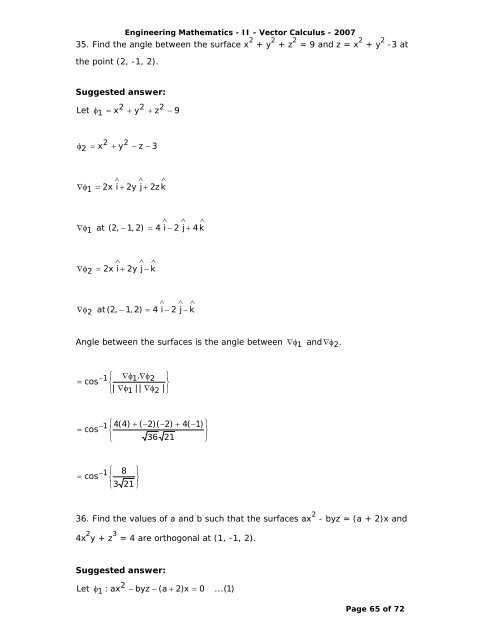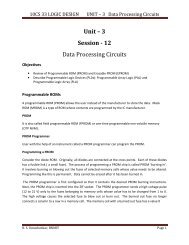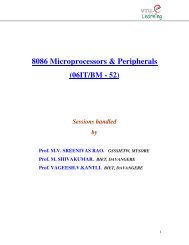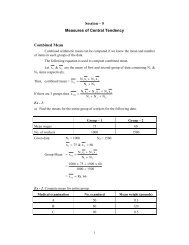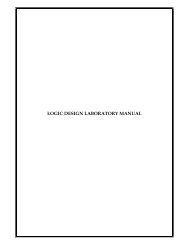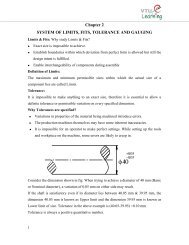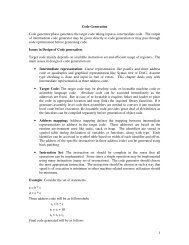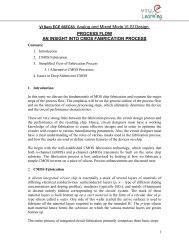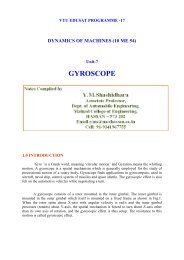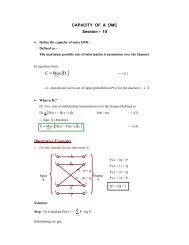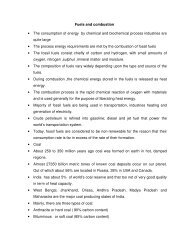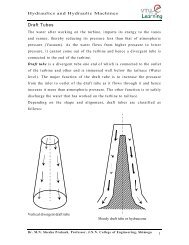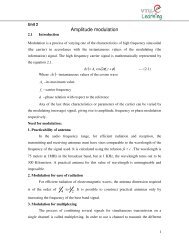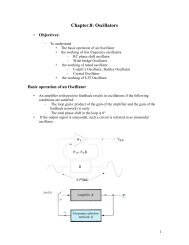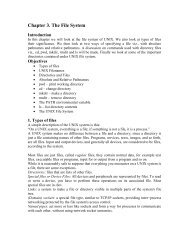Syllabus Vector Differentiation - Velocity and Acceleration - Gradient ...
Syllabus Vector Differentiation - Velocity and Acceleration - Gradient ...
Syllabus Vector Differentiation - Velocity and Acceleration - Gradient ...
Create successful ePaper yourself
Turn your PDF publications into a flip-book with our unique Google optimized e-Paper software.
Engineering Mathematics - II - <strong>Vector</strong> Calculus - 2007<br />
35. Find the angle between the surface x 2 + y 2 + z 2 = 9 <strong>and</strong> z = x 2 + y 2 -3 at<br />
the point (2, -1, 2).<br />
Suggested answer:<br />
Let<br />
x<br />
2<br />
y<br />
2<br />
z<br />
2<br />
1 9<br />
x<br />
2<br />
y<br />
2<br />
2 z 3<br />
1<br />
<br />
2x i 2y j<br />
2z k<br />
1<br />
at<br />
(2, 1,2)<br />
<br />
4 i 2 j<br />
4 k<br />
2<br />
<br />
2x i 2y j<br />
k<br />
2<br />
<br />
at (2, 1,2) 4 i 2 j<br />
k<br />
Angle between the surfaces is the angle between 1 <strong>and</strong> 2.<br />
<br />
<br />
.<br />
cos<br />
1 1 2<br />
<br />
<br />
|<br />
1<br />
|| 2<br />
| <br />
<br />
<br />
4(4) ( 2)( 2) 4( 1)<br />
cos 1 <br />
<br />
36 21 <br />
<br />
<br />
8<br />
cos 1 <br />
3<br />
21 <br />
36. Find the values of a <strong>and</strong> b such that the surfaces ax 2 - byz = (a + 2)x <strong>and</strong><br />
4x 2 y + z 3 = 4 are orthogonal at (1, -1, 2).<br />
Suggested answer:<br />
Let : ax<br />
2<br />
1 byz (a 2)x 0<br />
...(1)<br />
Page 65 of 72


